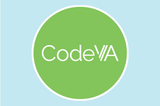
A simple Python program to determine if two words are anagrams
- Subject:
- Algorithms and Programming
- Computer Science
- Material Type:
- Activity/Lab
- Assessment
- Homework/Assignment
- Author:
- Ronald Sparks
- Date Added:
- 05/25/2022

A simple Python program to determine if two words are anagrams

These modules are designed to help you get familiar with Python while exploring interactive narrative design, where we put together stories that leave space for the reader to explore, make choices, and engage with the events of the story in a participatory way. Each module in this course follows the same format:Backstory: Unpack the context around the module, set up catalyzing questions to guide the inquiry throughout the module, and establish goals and objectives for your engagement with the moduleGuided Inquiry: Step through a sequence of tutorials and hands-on activities designed to help you learn the basic ideas presented in the modulesPrompt: A tightly-bounded, focused activity designed to facilitate sustained engagement with the ideas presented in the moduleCatalyzing Questions: A series of questions intended to provoke reflection & to put the module’s content in contextEach module is intended to support between 30 and 60 minutes of focused, sustained engagement. You may find it suits you to leave the module in the middle and return to your work; that’s totally fine. Work at your own pace, and don’t hesitate to reach out to your facilitators if you run into any problems.

In this lesson sequence, students will work in teams to learn the MakeCode and Micro:Bit Development platform. They’ll develop basic programming skills, implementing input, output, variables, and conditional control structures. At the end of the sequence, students will compete in a “puzzle box” challenge, attempting to create a puzzle using their Micro:Bit, code, and craft supplies and earning points based on how challenging their puzzle is to solve.

This lesson introduces 9-12 grade students to the Python random library. The program will choose a random number using functions from the Python random library in a set number range. The program will prompt the player to choose a number in the given range and keep track of the number of guesses the player makes. If the player guesses higher than the chosen number, it will give the player a message that their guess is too high. If the player guesses lower than the chosen number, it will give the player a message their guess is too low. The program will continue to prompt the player for guesses until they guess the correct number.

This lesson introduces 9-12 grade students to the tuple data type using Python. Students will learn what tuples are and how to create and use them.